Walking poles are an 'underrated' way to make hiking easier and boost stability - these are the 8 best ones for 2025
Whether you are hitting the mountains and hills or heading out on a walk this weekend, I've tested the best walking poles for stability, confidence and comfort
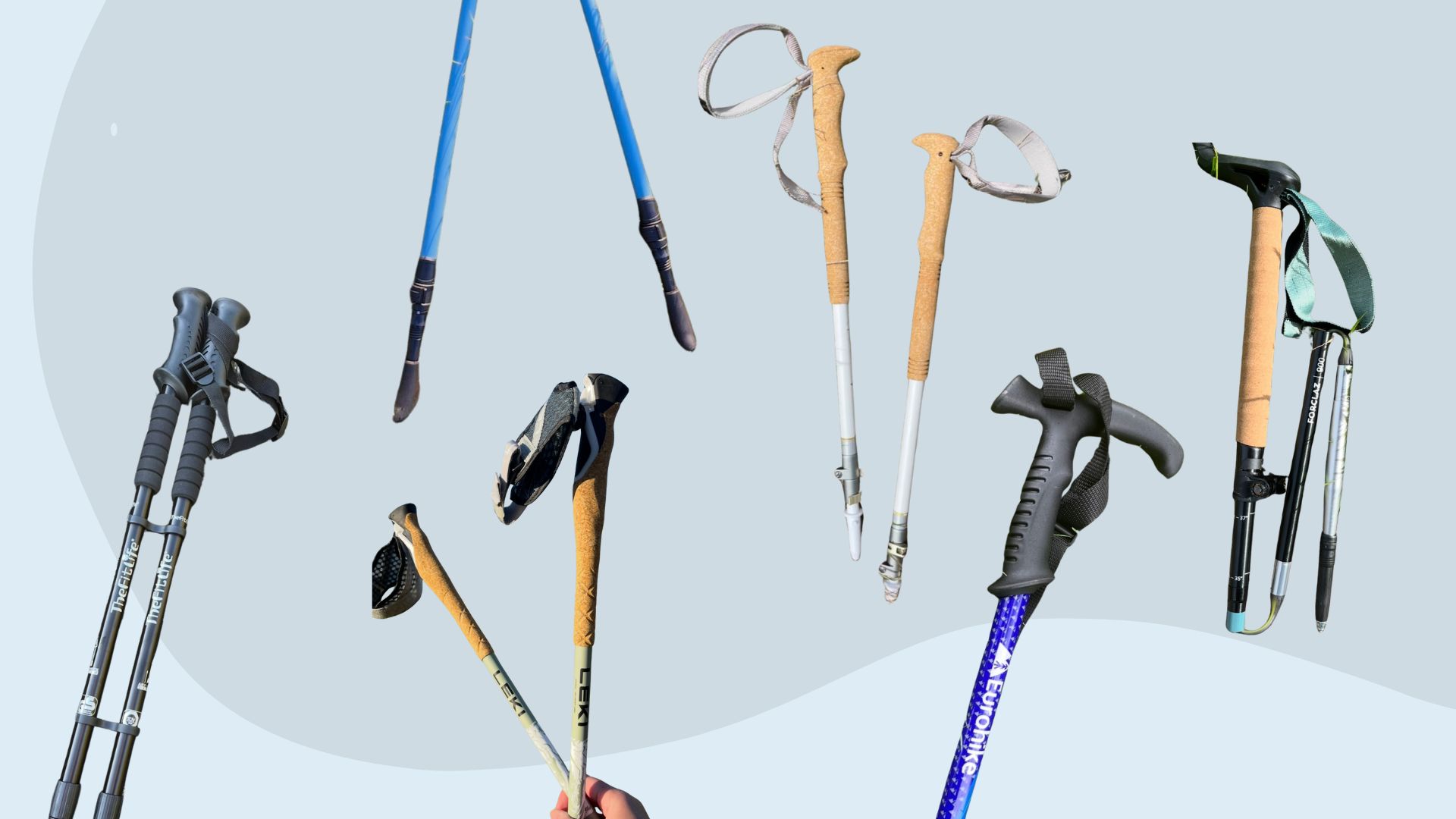

As an enthusiastic hiker for years now, I have my kit down pat, from my best walking shoes and water-resistant hiking trousers to my trusty thermos. But I have never taken walking poles with me. The reasons are varied, from the misguided presumption that poles are for older people to not feeling like a 'serious' enough hiker to warrant them, and not wanting the faff.
It's a decision I've lived to regret on multiple occasions, having scrambled my way hundreds of times around the Pennies where I live. I finally decided to change my ways this year and reap the benefits of reduced joint impact, more confidence, balance, and stability that come with having "an extra pair of limbs" on the trails, as Andrew Bennett, a buyer for hard goods and accessories for Mountain Warehouse, puts it.
"Walking distributes the effort more evenly between your arms and legs, which helps with fatigue and can make a longer walk feel easier," he says. "They’re especially useful when walking on uneven ground, going up or downhill, or carrying a heavy rucksack, but even on a gentle country path, they can help you walk more comfortably and confidently."
To find my perfect pair, I've been trialling over a dozen walking poles from Leki, Black Diamond, Komperdell and Silva these past few weeks. My favourites have included telescopic and foldable varieties offering different grips, straps, material types, and price points, bringing my roundup of the best to eight walking poles. I also asked the experts for guidance on buying (and using) walking poles for my next trip.
The best walking poles, tested by a true hiker
The best walking poles overall



1. Black Diamond Pursuit Shock Trekking Poles
Our expert review:
Specifications
Reasons to buy
Reasons to avoid
I had heard good things about the Pursuit Shock Trekking Poles from Black Diamond, and they didn’t disappoint. Not that it is all about style, but these walking poles look sleek, and they are available in two sizes: small/medium and medium/large. You don't always get this option with walking poles, so I was impressed.
Made with aluminium, which is sturdier but typically heavier than carbon fibre, these telescopic walking poles make an excellent choice if balance, as opposed to speed, is key for you. I tried them out on some steep hillsides in the Pennines across grassy and rocky paths. Normally, I scramble about on my hands and hope for the best, but this time, I was covered, and even as a walking pole novice, I felt confident using the Black Diamond Pursuit Shock Trekking Poles. I especially enjoyed using them downhill, when I benefited from better balance and less pressure on my legs.
The poles have an ergonomic cork grip, which felt comfortable to hold and didn’t get slippery despite the warm weather, and a ‘Bloom’ (an algae-infused foam, I learned) grip extension that offers another hold option when tackling particularly steep terrain. There are also wide, slightly spongy wrist straps for extra support that are tagged left and right.
Although they are not foldable walking poles, I found them easy to carry in my 15L rucksack. Compared to other poles, the ‘soft touch’ flicklock adjustments are easy to use when adjusting the length, and there's a hex tool for maintenance. They also have features for walking in the snow and colder climates, if that's a must-have for you. At £160 full price, these are not the cheapest walking poles on the market, but they are solid all-rounders that will last, and in that respect, I consider them the best investment.
The best walking poles on Amazon
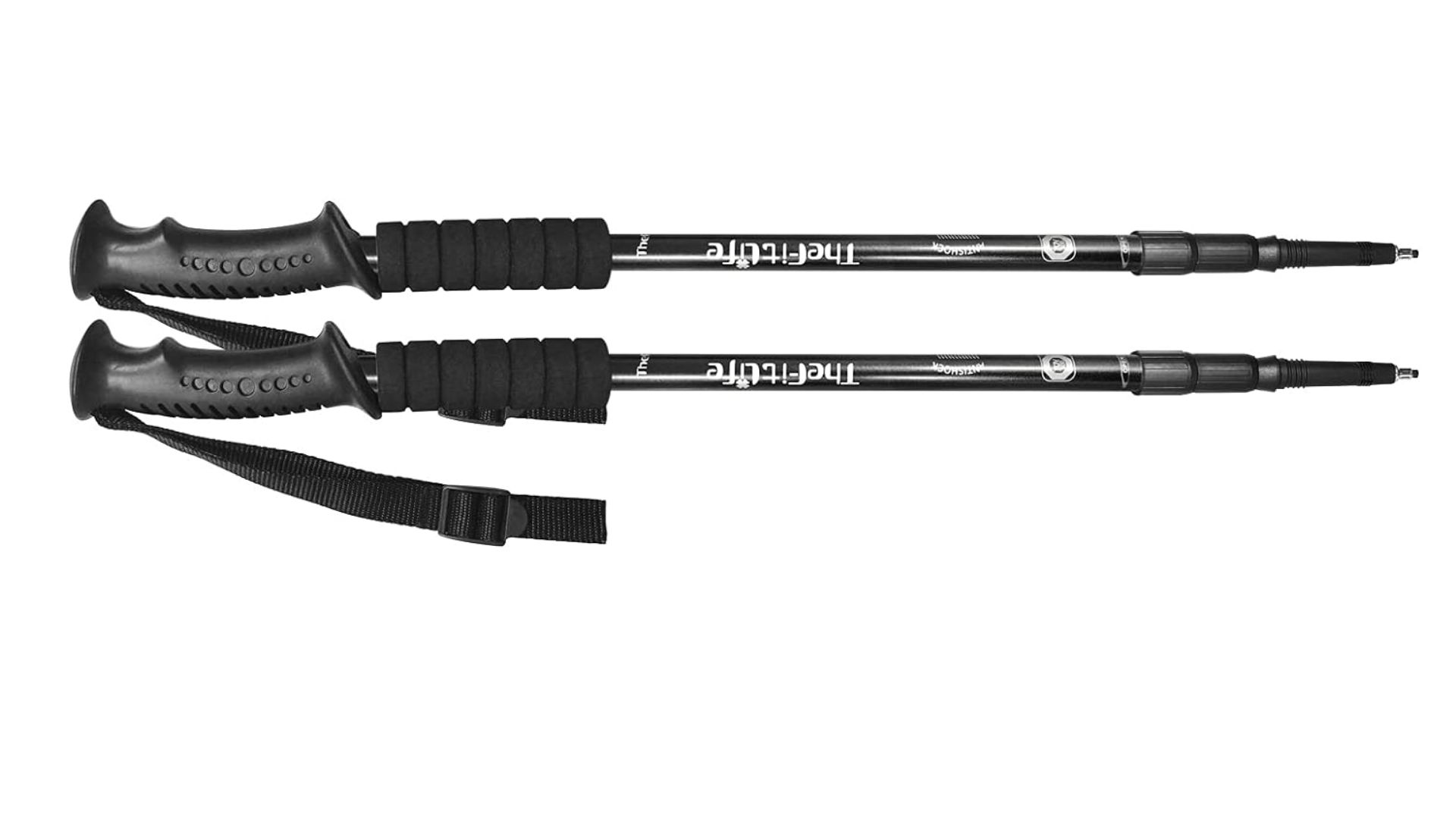

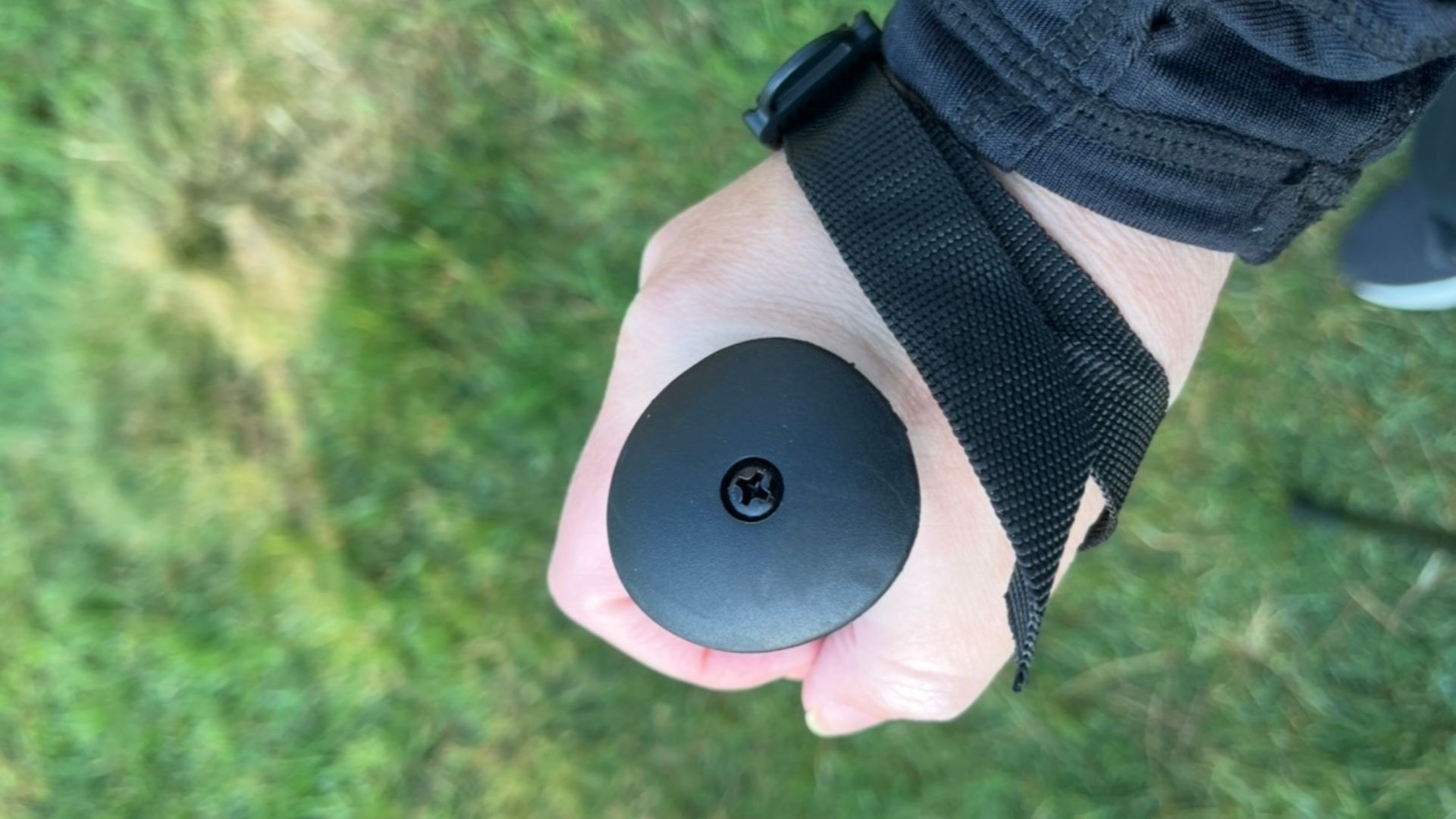
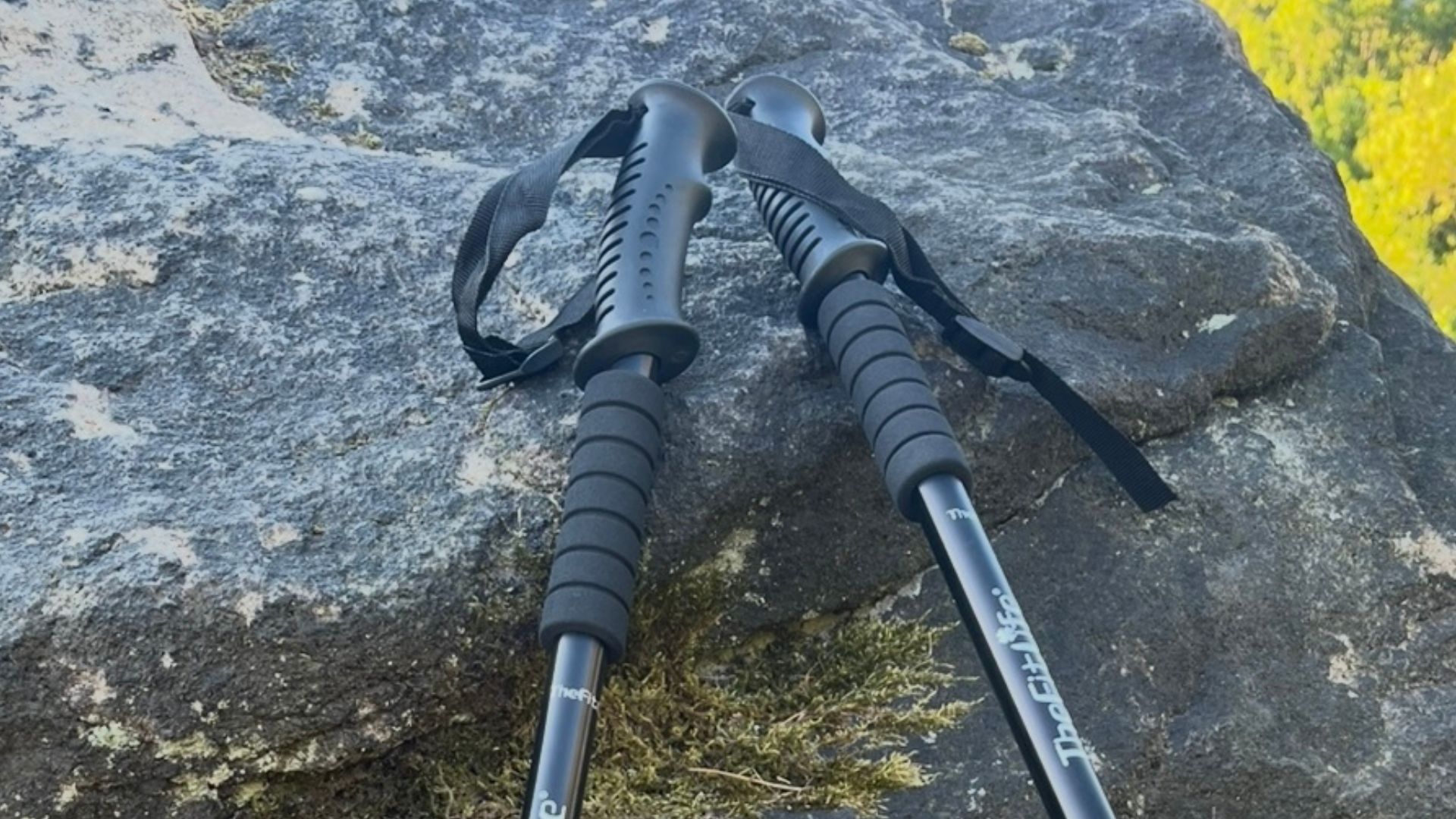
2. FitLife Aluminium Trekking Poles
Our expert review:
Specifications
Reasons to buy
Reasons to avoid
Amazon is a one-stop shop for walking poles, but the sheer volume of choice can be overwhelming. And of course, it makes it trickier that you can’t try before you buy, so for guidance, I turned to the site’s reviews and with over 10k of them (90% above 4 stars), TheFitLife Aluminium Hiking Poles stood out. Priced at £24.99, they are a steal, especially when you consider what you get for that price, which includes five colour options (black, blue, purple, red and silver), a carry bag, tips (that go on the end to reduce sound and impact on the ground), baskets and clips for storage.
Being candid, they do lack the finesse of premium poles. After trying them for myself, I found the thin straps are not as comfortable as other softer options. There is a twist lock system to adjust the height of the poles, as opposed to the typically preferred flicklock, and they have a rubber (not cork) grip, which got a little slippery when my palms were sweating.
However, basic as they are, these walking poles do a great job and should be all you need to reap the benefits of walking. Despite the low price point, reviewers have talked about using them on Ben Nevis and Snowdon, and I found them a breeze to use when traversing tricky moorland. They also come with rubber tips, which are useful when walking on harder ground as they don’t make any noise. These are solid, no-nonsense walking poles. Time will tell as to how long the last, but as it stands, I thoroughly recommend them as a budget buy.
The best lightweight walking poles
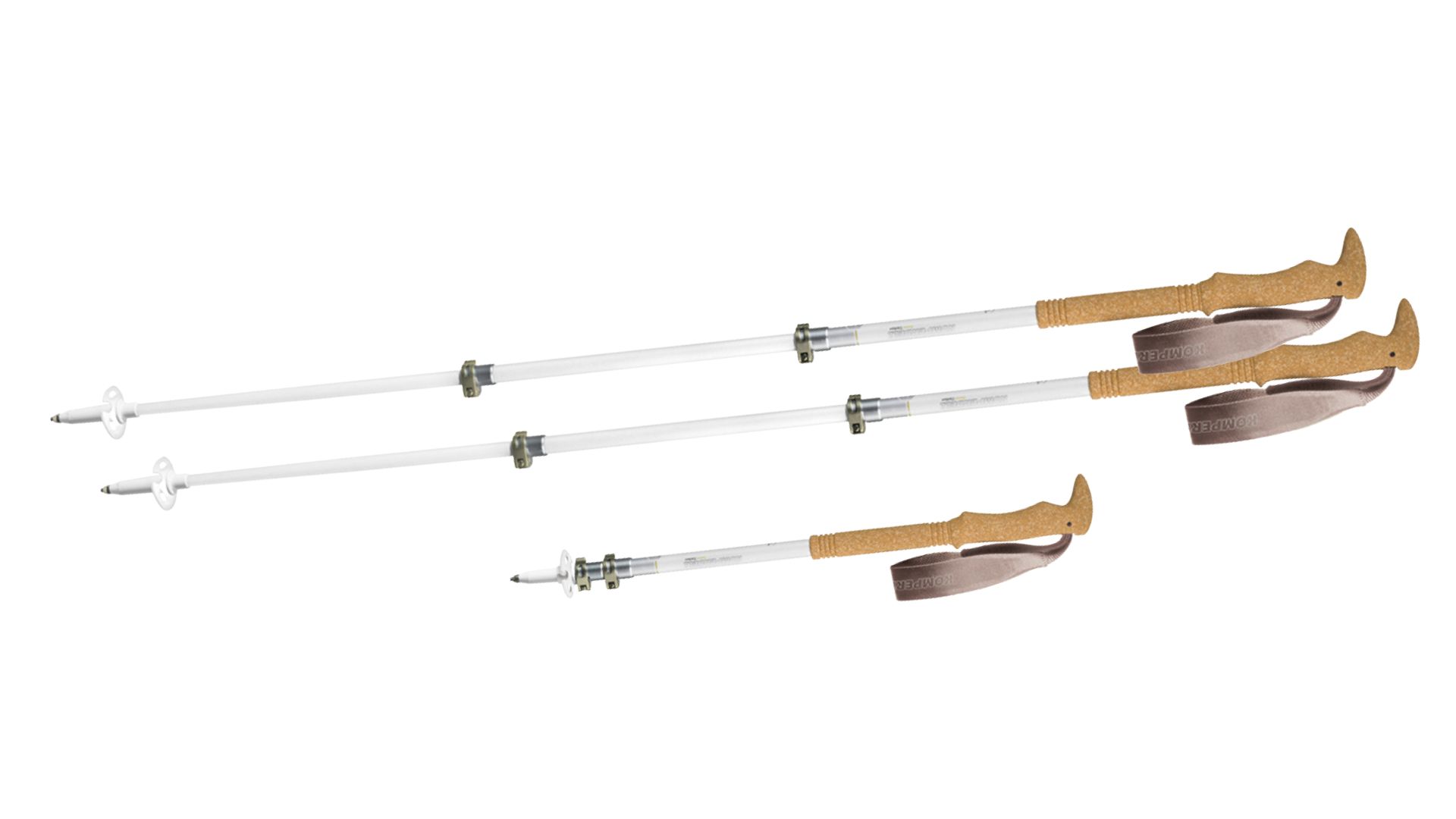
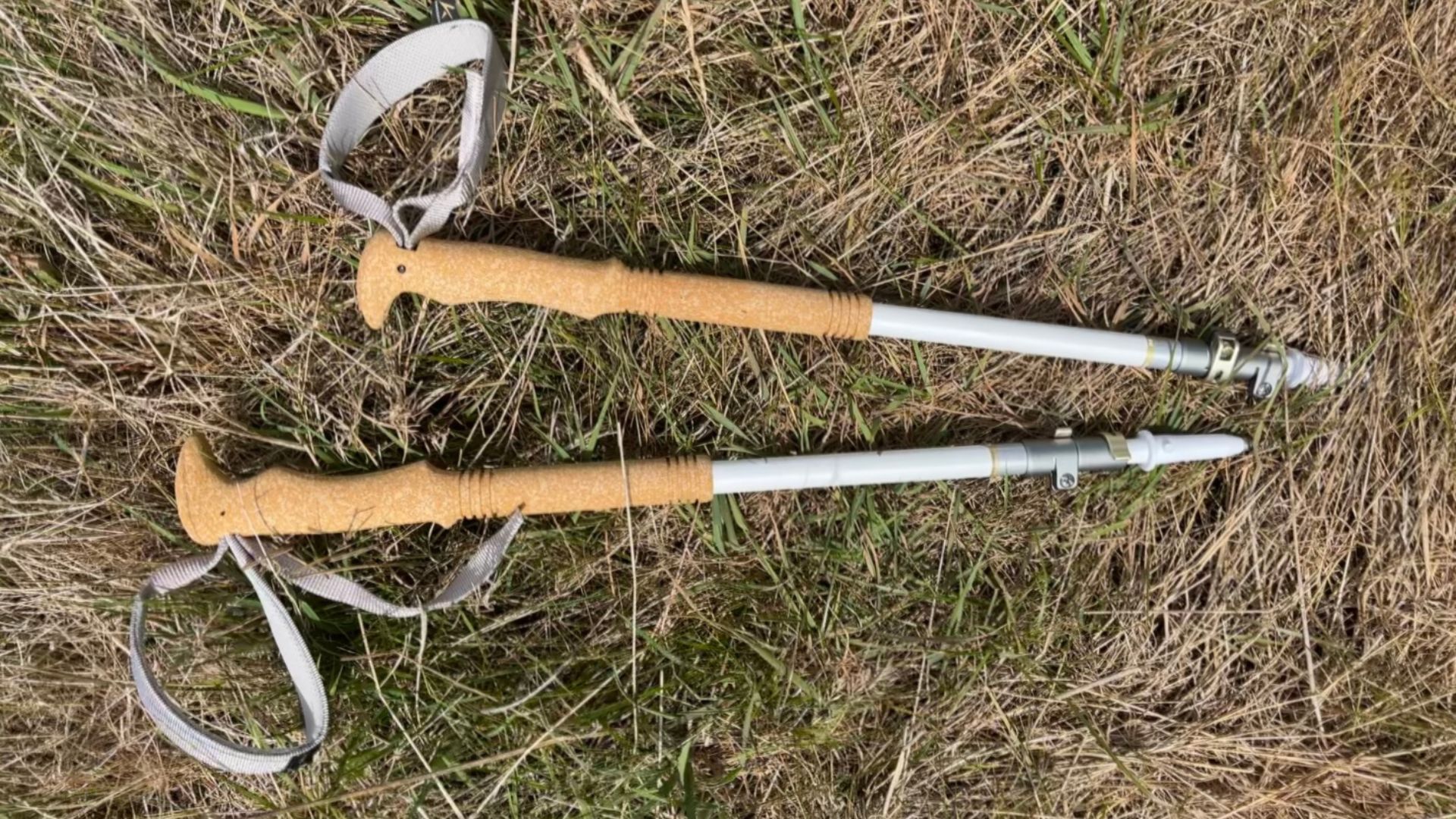
3. Komperdell Borea Carbon Pro Walking Poles
Our expert review:
Specifications
Reasons to buy
Reasons to avoid
The Komperdell Borea Carbon Pro has been designed with women in mind and it looks beautiful, with a white pole shaft, delicate detailing, and metallic gold lever locks. But there is more to it than simply aesthetics, with technical features that make it a delight to use on walks and hikes.
These telescopic walking poles are divided into three sections. The two higher sections are carbon and the lower section is titanal (an aluminium alloy) for extra durability. Immediately, I noticed how lightweight these poles were. Handy for packing, but they came into their own when I'd been hiking for over an hour and wasn't experiencing any arm fatigue. I also loved the cork grip, which moulded beautifully to my hands from the off and remained comfortable throughout the hikes, even when there was a lot of climbing. An extended grip runs down the handle, which is useful for tackling steep ascents, and the padded wrist strap was extremely comfortable.
These poles are relatively pricey at almost £136 full price, but they are still cheaper than my top choice and some of the most stylish and comfortable walking poles I've ever used. The only thing I would say is that while they felt durable on my hikes, and I did feel like I was zipping along, you might want to consider a heavier, fully aluminium-based pole if you are tackling particularly challenging terrain for lengthy periods.
The best walking poles for seniors


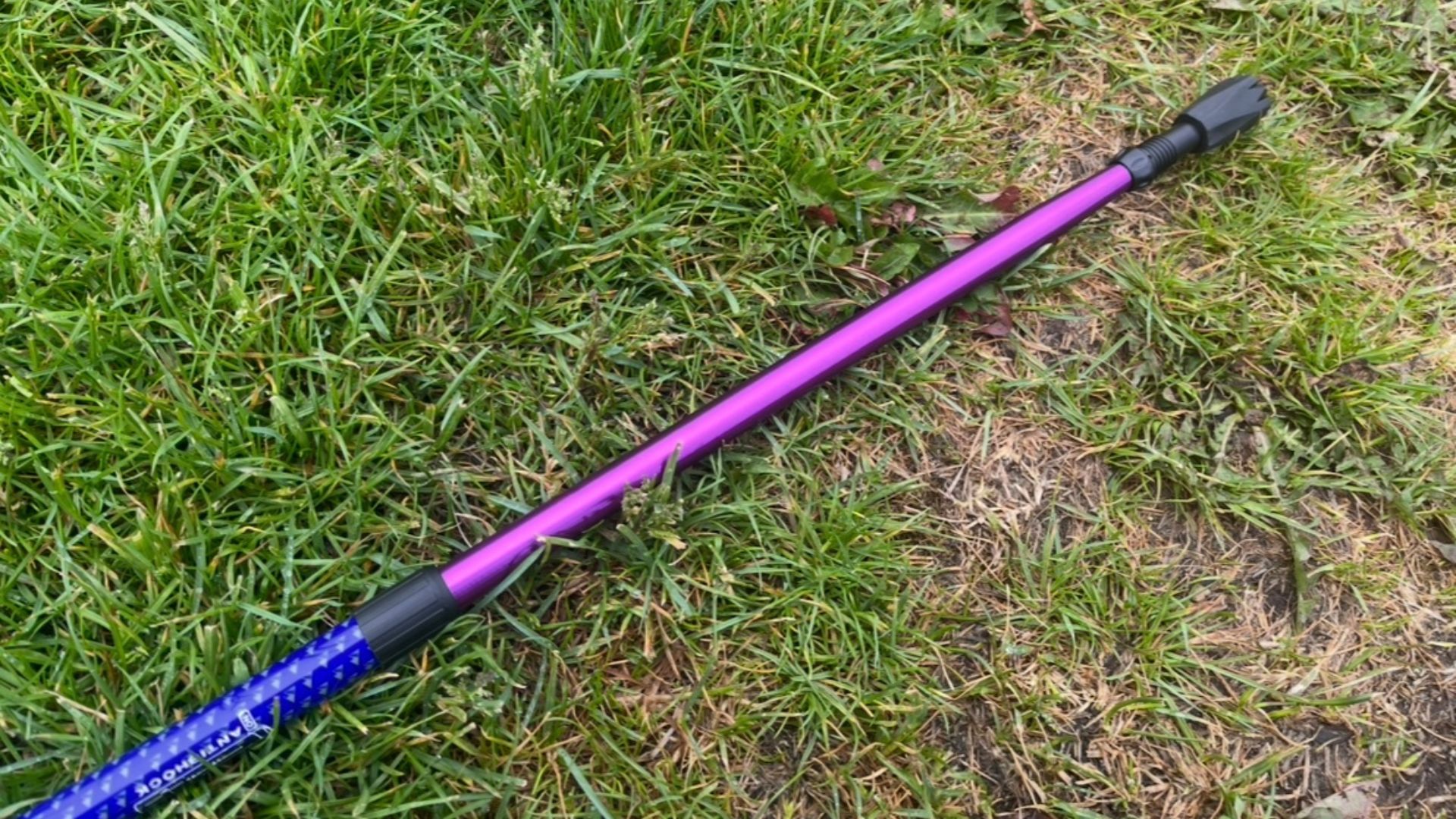
4. Eurohike Trekker Antishock Walking Pole
Our expert review:
Specifications
Reasons to buy
Reasons to avoid
There's no age limit on walking, but as the years go by, we (and those we love) need a little more support than we used to - even more than what most standard hiking poles offer. This particular category, and the Eurohike Trekker Antishock Walking Pole, fits the bill perfectly with its hybrid features.
It might not have all the bells and whistles offered by higher-end walking poles, but this is a simple, easy-to-use telescopic walking pole with an aluminium pole shaft that feels durable and robust. As the manufacturers highlight, the antishock system reduces impact and eases pressure on the lower spine, hips, knees and legs while walking. It also has an extended ergonomic handle and a wrist strap, so you don’t have to worry about crouching down to pick the pole off the floor if you drop it. At £16 too, it's a real steal.
However, to adjust the system, you use a twist lock system, rather than a lever lock system, which might prove tricky if you have reduced mobility and strength in your hands. The Eurohike Trekker Antishock Walking Pole also doesn’t collapse compactly, so you will be holding it one way or another when you are out, which is something to consider.
Although they are sold individually, which is how I trialled the pole, for optimum balance, gait, stability and confidence, expert advice is that it is always preferable to use two walking poles.
The best walking poles for trekking
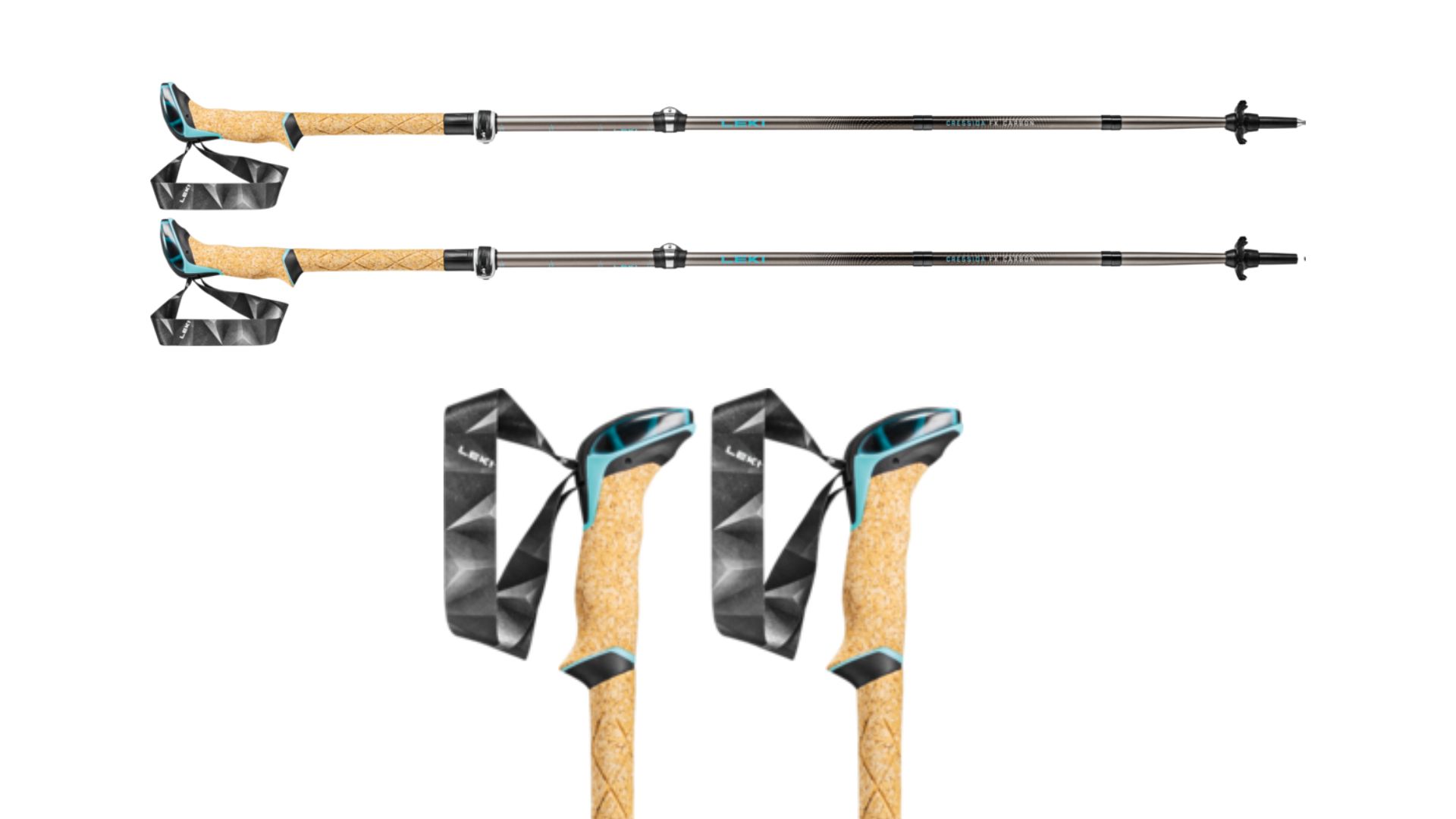
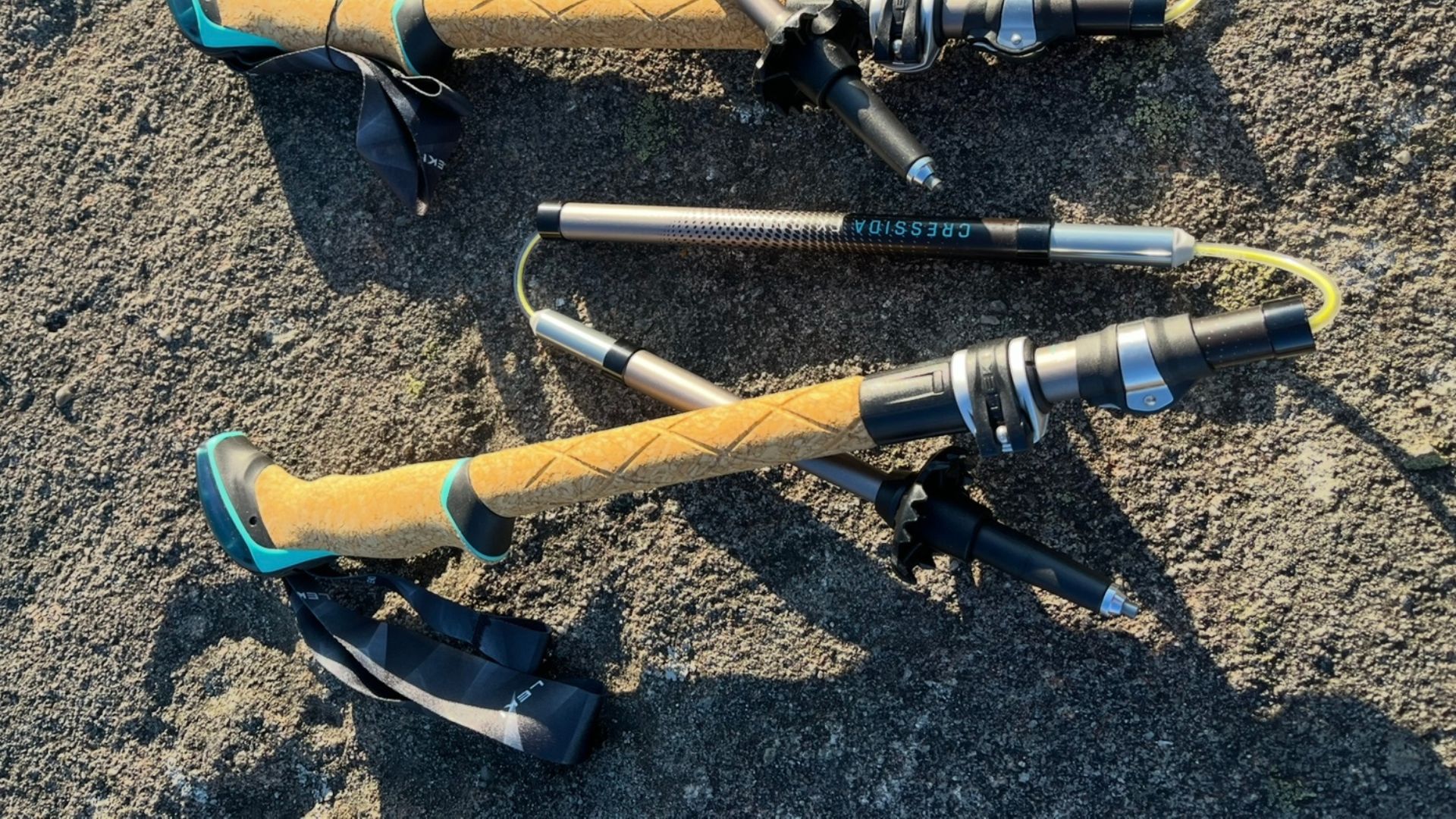

5. Leki Cressida FX Carbon Trekking Poles
Our expert review:
Specifications
Reasons to buy
Reasons to avoid
The Leki Cressida FX Carbon walking pole is the most expensive of all I trialled, so expectations were high, but thankfully, they didn’t disappoint. Not only is it a stylish walking pole, with its pop of turquoise, but the high-tech features create a comfortable and versatile hiking experience.
Although hiking and trekking involve walking, trekking trips tend to be longer and more challenging than traditional hiking, which could be as simple as an early morning walk. You'll be trekking if you're going for a multi-day trip, for instance. Lightweight, fast and supportive, these make an exceptional choice as trekking poles.
These foldable walking poles have been designed primarily for women, which is most noticeable in the ergonomic soft cork grip, created for smaller hands. The mini ledge on the grip and extended cork grip of over five inches meant my hands felt wonderfully supported when hiking on the uneven moorland and hills.
The pole shafts are made from carbon fibre, which is uber light while maintaining strength. They are easy to stretch out and click into place using the external locking system. You can also adjust the length. Poles at higher price points can be overly complicated, but as a walking pole novice, this was welcomingly simple. They also fold down compactly into sections and come with a mesh bag, which is handy when carrying them in your rucksack or storing them away.
Overall, these are impressive poles, which I felt confident using when trekking in both wet and dry conditions. They are expensive, so unless money is no object, I would only recommend these walking poles if you are a year-round avid hiker or gearing up for a big challenge. Otherwise, you could do as well with a cheaper option.
The best walking poles for speed
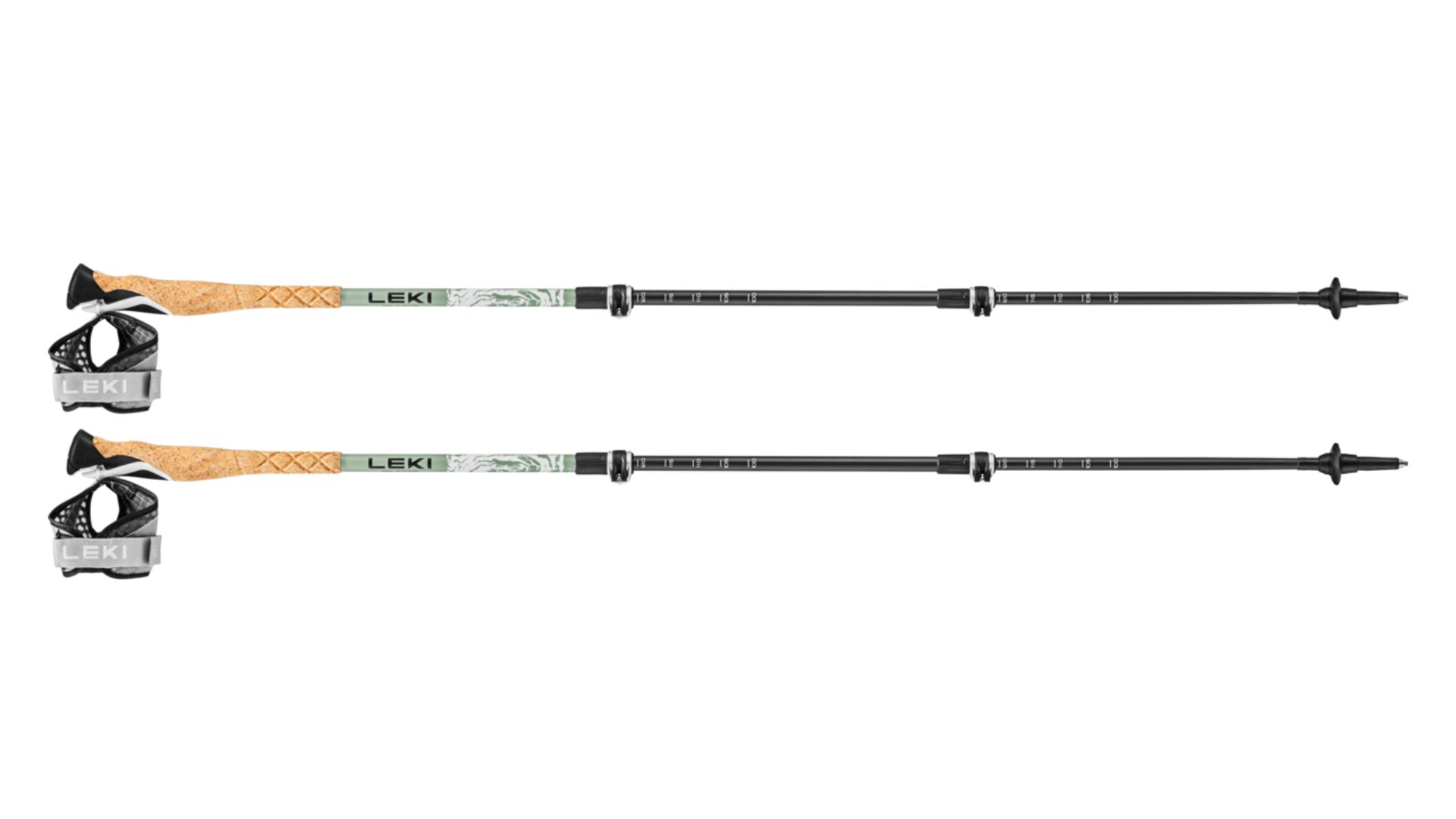
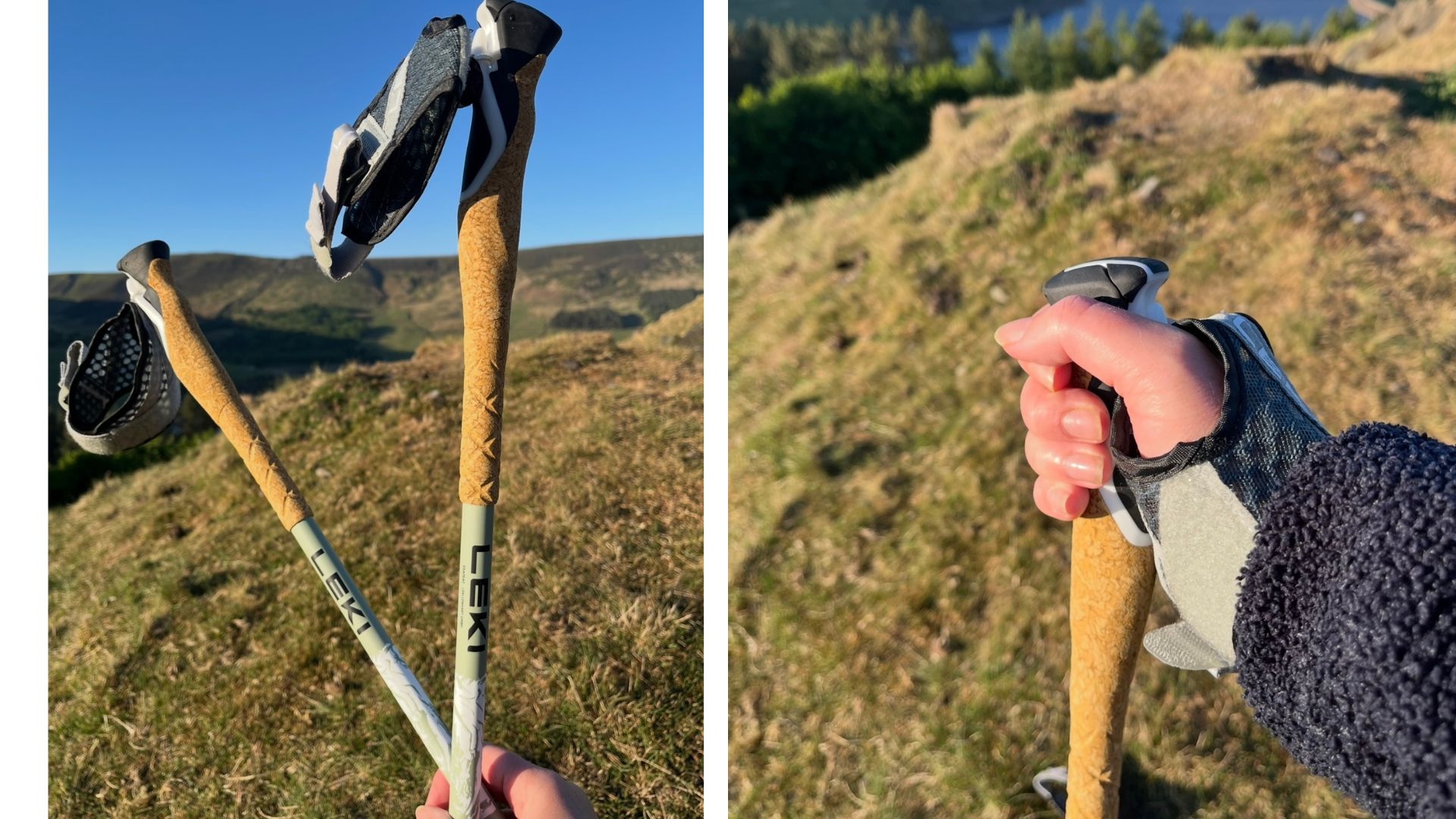
6. Leki Cross Trail Carbon Walking Poles
Our expert review:
Specifications
Reasons to buy
Reasons to avoid
If there is one thing I am keen to try this year, it's trail running. If I embark on that new journey, I will absolutely be utilising these Cross Trail Carbon poles from Leki. Created for moving lightly and swiftly across hills and fells, these telescopic carbon poles are light and can be used for speedier hikes as well as trail runs, with glove-like straps for freer movement on the trails.
On first impression, I loved the look of these walking poles with the marble-effect green and white design on the pole shaft. The grip is unique, too. At first, it looks like your regular cork grip, but it's a comfortable foam. Straps are attached and together, they make up what's described as a 'Shark System', which basically means you can attach or detach the glove by clicking it in and out of the grip. I'll admit this took a bit of work to figure out initially, but it's actually quite simple when you know how. For those looking to get into trail running, I certainly recommend it.
It is also easy to extend and retract the pole shaft and to clamp them into place, but a foldable, or collapsible pair of walking poles would obviously be quicker to adjust, and something to consider if you want to save time and effort.
The best mid range walking poles
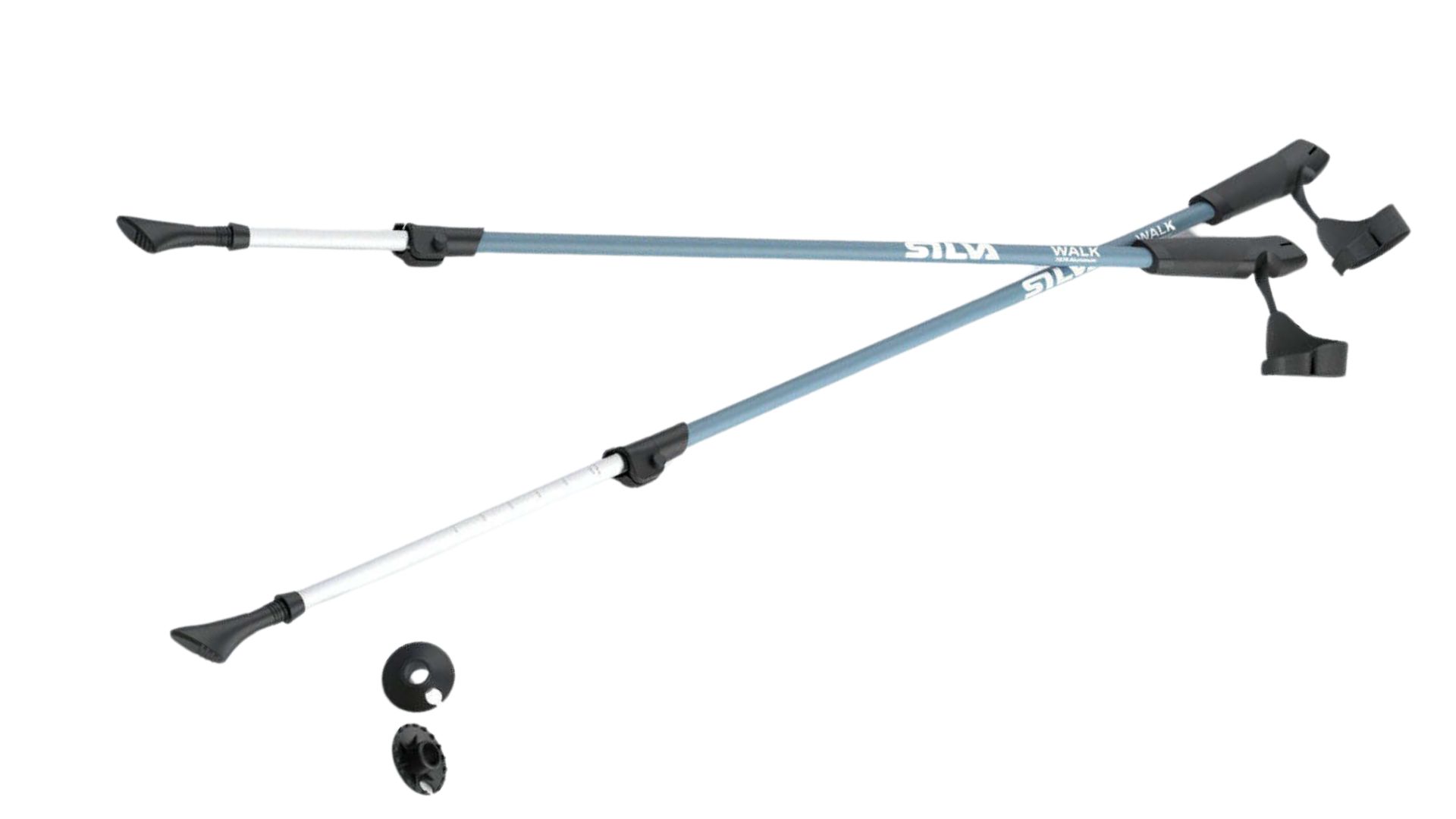
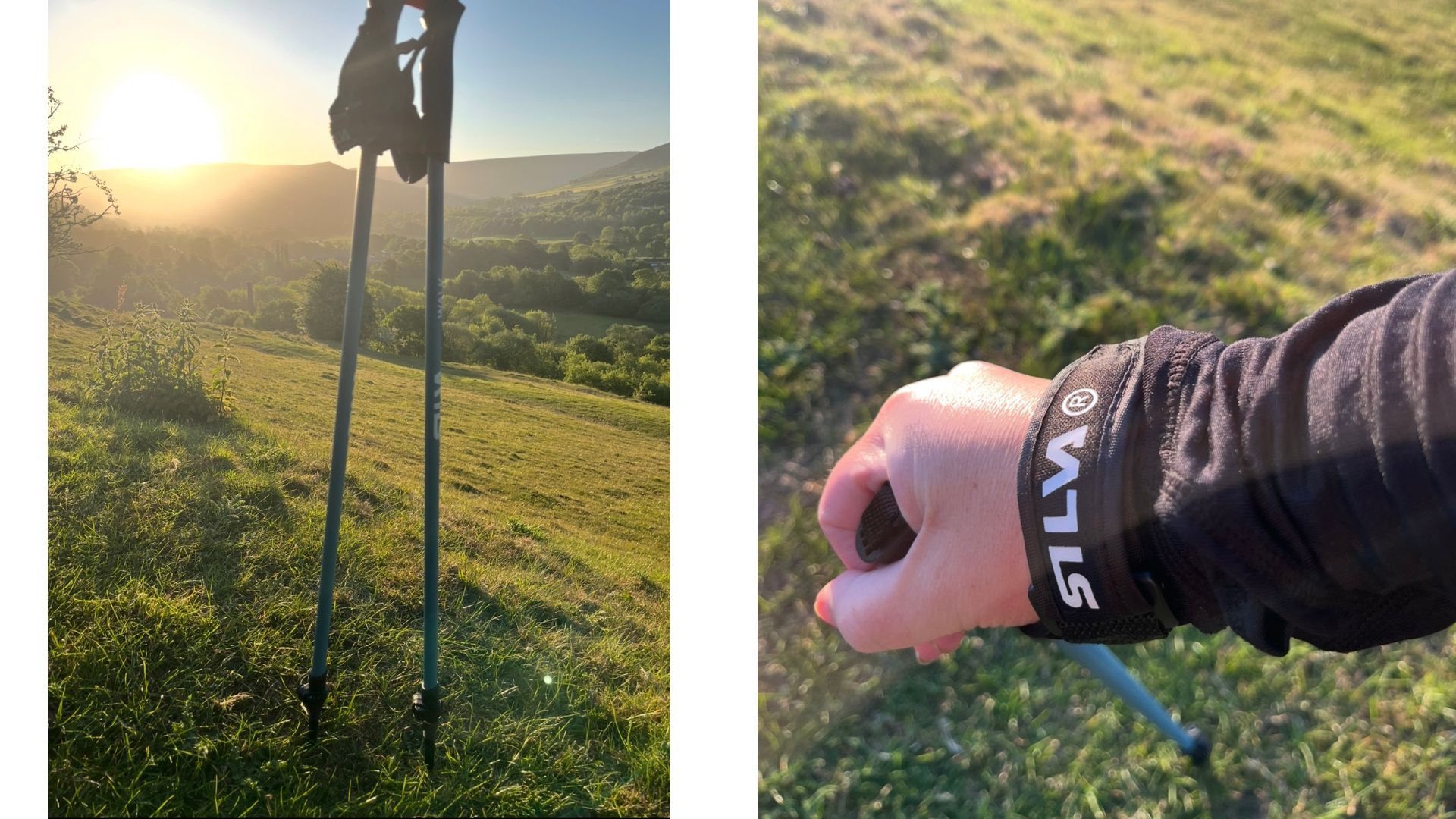
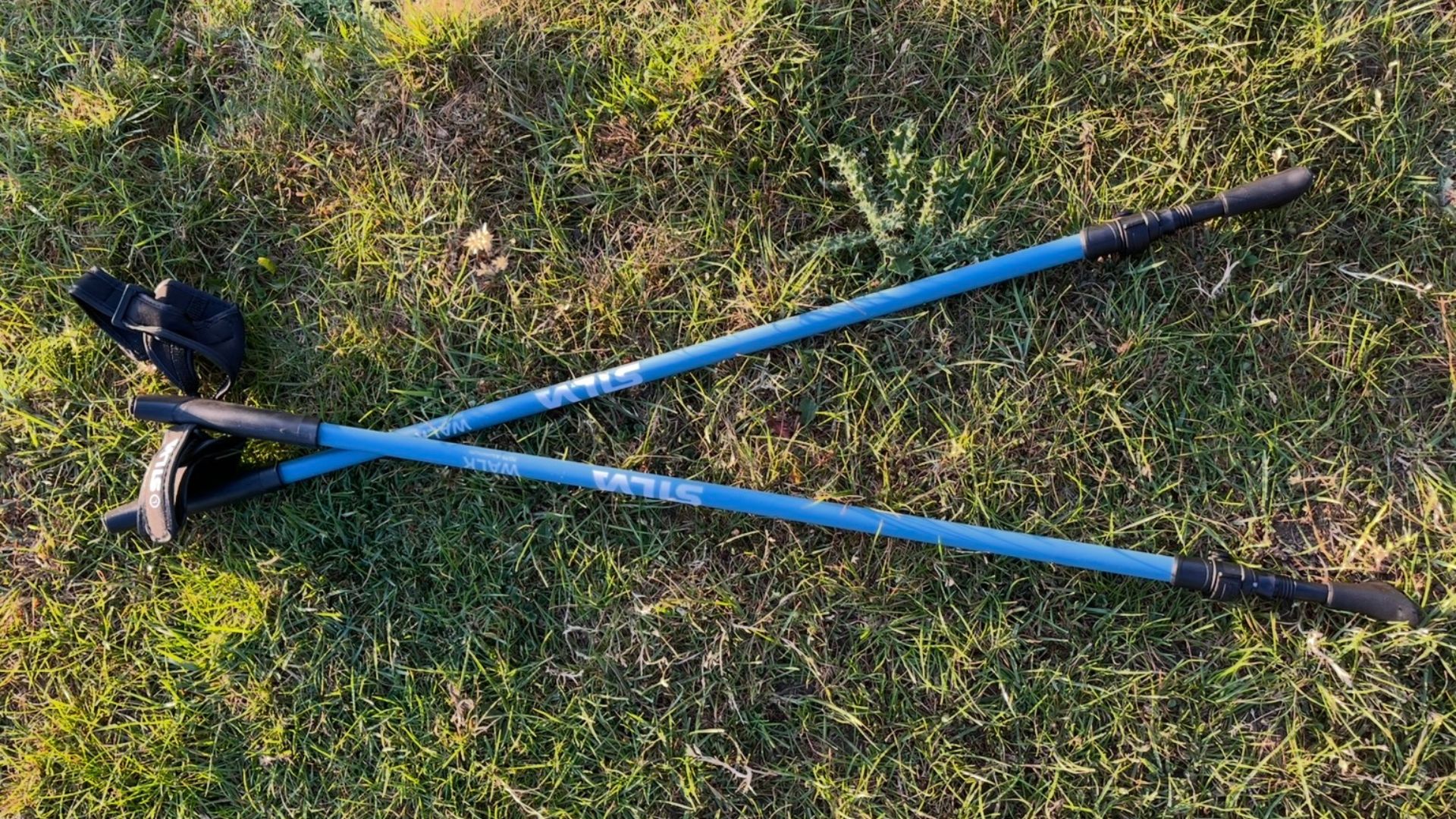
7. Silva Aluminium Walking Poles
Our expert review:
Specifications
Reasons to buy
Reasons to avoid
It's fair to say that walking poles fall on the pricier side of the spectrum. So, I knew I had to add a middle-range option, and luckily, the Silva Aluminium Walking Poles fit that category perfectly at just under £50 for the pair. These one-size telescopic pale blue walking poles are made from aluminium, so they are intended to cope with varied terrain, and they are made to last.
The Silva Aluminium Walking Poles are not the most compact accessory, but I found they can be strapped to the side of your rucksack with little fuss, and given the reasonable price tag, I was happy to compromise on this. The simplicity of them is the main selling point, though - they are perfect if you're after poles that don't need tweaking or a manual to know how to use them. You can just get out there.
The plain rubber grip doesn't stand out, but the wrist gloves do, as they are as substantial as those on the Leki Cross Trail Carbon poles I tried, but they don't clip on and off as easily and are a fraction of the price. These ones also have rubber 'paws' that protect the tips of the poles and prevent that click-clacking sound on hard ground.
These might not be the most unique or high-tech walking poles on the market, but like the price tag, they make a modest choice. I found them the ideal option if you want dependable poles without parting with a lot of cash.
The best budget compact walking pole

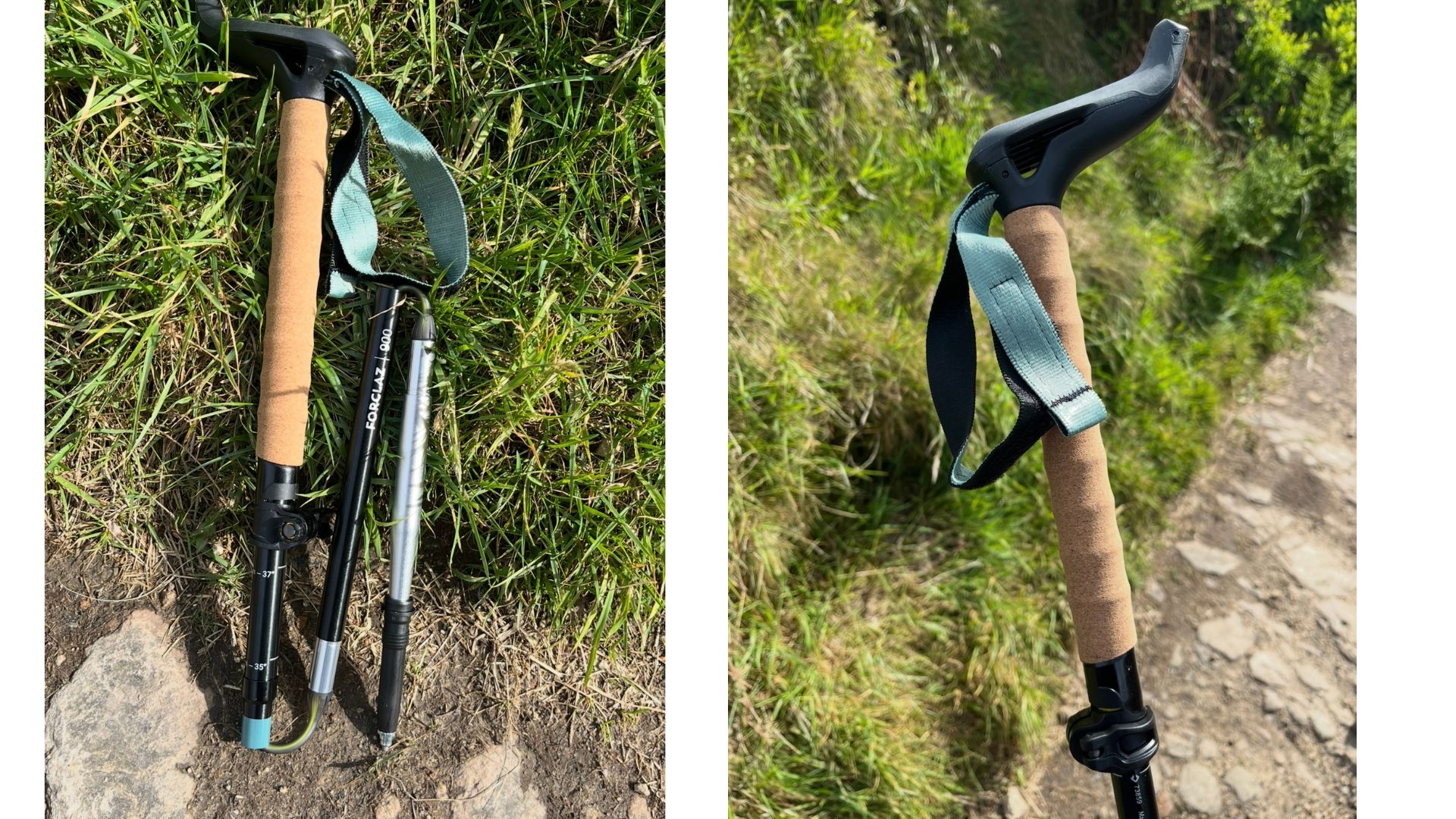
8. Decathlon Forclaz 1Ultra Compact Trekking Pole
Our expert review:
Specifications
Reasons to buy
Reasons to avoid
Whether you need some walking poles for a holiday or you're just getting into walking and want to know what to take hiking as a beginner, you don't want to spend serious money on this accessory, especially with all the other kit you have to buy. When I tried Decathlon’s Forclaz 1Ultra Compact Trekking Pole, I knew I'd found my budget option.
I should note that these are sold individually, but it is always advisable to use two walking poles when hiking.
Reading about the design, a lot of effort was put into making them as durable as possible, hence the wide aluminium pole shafts. Despite this, they feel light, and I found them easy to assemble. You do this by extending the poles, which are connected by a tension string, and clicking them into place with a lever lock and a push pin locking system, which sits around a third of the way down the pole.
These poles have an extended handle and an extended grip beneath that. The former might not be to everyone’s tastes, but I found it secure and comfortable, and the combination provided plenty of hold options when hiking, especially when the terrain was undulating. I noticed some customers complained in reviews that the pole hadn’t coped well in soft ground, but I didn’t find this to be the case - at least so far on my travels. The poles felt comfortingly robust to use, fit snugly in your rucksack, and don’t cost the earth. There is a lot to like.
Testing the best walking poles

Susan Griffin spent weeks testing the best walking poles in the Pennines.
How we tested the best walking poles
I am no stranger to hiking and have written extensively about the benefits of hiking, whether an early morning walk or a lengthy hike out in the Pennines close to where I live. I've also tested plenty of hiking kit over the last few years, from the best hiking sandals to workout leggings.
For this trial, I went on a minimum of two walks with each of the walking poles, a shorter walk to get to grips with the pole, and longer ones to see how it fared with extended use.
In the name of fairness, I used them on similar terrain. This was typically hilly, uneven moorland and pathways. I assessed how they looked, how they felt to hold and use, how confident and stable I felt, how easy they were to adjust in length, and how compact they were for carrying. Note: I did not trial the Eurohike walking pole under these conditions as that's not the intended purpose. Instead, I trialled it in my local park, which has gentle slopes.
I also requested advice and tips from three experts (two buyers from leading outdoor companies and one hiking leader) about the benefits of using walking poles and how to use them optimally, incorporating my own experience with the expert advice.
I considered the following:
- Comfort: As with all outdoor clothing and kit, comfort is absolute key when using walking poles. I took into account how light (or heavy) they were and how the handle felt in my hands, both on opening and during the hikes.
- Support: The main reason for using walking poles is undoubtedly to enjoy greater balance and stability, so this was key when reviewing the walking poles. Essentially, did it make me feel more confident going up and down hills, or did it feel like a hindrance? If it was the latter, they didn't make this list.
- Grip: Another essential factor to get right is the handle grip. I considered the type of materials used and how that would impact use and cost, as well as the shape and whether it was ergonomic.
- Material: I took into consideration the types of material used for the walking poles, and what impact this would have on weight, durability, comfort and use.
- Price point: Walking poles are a luxury for many and don't always come cheap. I tried to find a set that met the other criteria in all different price brackets and assessed whether pricier options were worth the spend.
- Additional details: Aside from the specific specs of each walking pole, I also looked at the design, whether there were colourway options, whether they came with storage clips, a storage bag, and various tips and baskets, and if modifications had been made with women in mind.

Susan Griffin has been hiking for about a decade, exploring routes around the Pennines and in Europe.
How to choose the best walking poles for you
- What are you using them for? “For mixed or rough terrain, look for something adjustable and sturdy, with click-lock mechanisms and robust materials. For flatter ground, a simpler, lighter option might be all you need,” says Bennett.
- How are you, and how long are your arms/torso? This is crucial for determining the correct pole length,” says Steve Davies, the head buyer for Trekitt. "Adjustable poles are versatile for different terrains and can be shared, but fixed-length poles can be lighter overall."
- How important is weight vs durability? For long distances, lighter poles (made of carbon fibre) are preferable, but they are often more expensive and can be less durable depending on their design. "Aluminium poles offer a good balance of durability and weight,” says Davies.
- Do you need to carry and store them? Folding poles pack down small and can easily be stowed inside a rucksack. "Telescopic poles also collapse down well and can be strapped to the outside of most walking packs. If you plan to store them regularly, check the collapsed length and storage method,” says Bennett.
- What season are you using them in? "Not all poles will have the relevant accessories available for different conditions, so checking the available accessories (sometimes included in the description online) is a useful step for getting the most out of your poles and making sure you choose the right pair,” says Davies.
- Are they going to need repairing? Both Black Diamond and Leki have comprehensive spare parts catalogues for their poles, parts like carbide tips and rubber protectors, and spare pole sections, locking mechanisms and spare straps should they be needed, says Davies.
What are the benefits of using walking poles?
I was always aware of the benefits of using walking poles, even if I never previously committed to them. This trial experience, however, has made me a convert. It's not only the physical benefits I’ve noticed, such as less pressure on my joints, but mental ones like increased confidence.
Siân Brewer, an outdoor enthusiast and hiking leader who runs Discover Your Outdoors, has used walking poles for years.
“I find poles really handy when walking on uneven ground," she tells me. "They support my body on more challenging walks, provide extra balance and are great for testing out how boggy the ground is before I overcommit and find myself up to my knees! That said, poles are also great on flat terrain for building up a bit more speed."
She also notes that "using poles can help take pressure off your legs, especially when going downhill or carrying a heavier rucksack."
Walking poles can also improve your walking workout by targeting other muscles in the body. "Using them can also activate the triceps more, and for anyone returning from injury or building up to more challenging activity, they can help spread the load," she says. Throw in a weighted vest for walking, and you have a full-body weighted workout, complete with stability exercises.
How to use walking poles
- Adjust the height: When you hold the pole, your elbow should make a right angle, Brewer says.
- Make sure the pole is under your hand: "Slip your hand through the wrist strap so the pole is dangling under your hand," says Brewer. "Move your hand down to grip the handle, with the wrist strap tucked under your thumb and palm. You should be able to push down into the strap, with your palm using that pushing movement to propel you along."
- Keep the poles angled backwards: Its more energy efficient to keep the poles angled slightly backwards with every step rather than flicking them forwards, she notes.
- Find a rhythm: "On flat ground, swing the poles in rhythm with your stride," says Bennett. "When going uphill, shorten the poles slightly and use them to push yourself up. On descents, lengthen them and use them to absorb the shock.”
Tips for using walking poles
- Keep your poles clean: It will be tempting to put your poles away after your hike, but Davies suggests checking the locking mechanisms and tips of the poles regularly, and giving them a clean before putting them away. This will help them last longer.
- Find your technique: "Try to keep a natural rhythm, planting the pole opposite your lead foot," says Bennett. But don't worry if you don't get it right the first time. "As with all things outdoors, it’s important to figure out what works for you and that might take a few goes," adds Brewer.
- Check your surroundings: "You might want to avoid poles when scrambling or using your hands for balance. Also, in areas with fragile ecosystems or historic sites, it’s best to check if poles are permitted. Using rubber tips can help minimise impact on sensitive ground," says Bennett.
- Make use of the help there is: "Some outdoor retailers or walking groups offer introductory sessions on how to use walking poles correctly, or head to YouTube for instructional videos on using walking poles," says Davies.
Meet the experts on walking poles

Andrew Bennett is the Buyer for Hardgoods and Accessories across Mountain Warehouse and Animal. With nearly four years at Mountain Warehouse, Andrew brings a deep understanding of outdoor gear, especially within the sphere of walking. With walking products, a key focus of his work, Andrew combines hands-on product knowledge with a passion for helping people get the most out of their time outdoors.

Siân Brewer runs Discover Your Outdoors, which supports people to develop skills and confidence in all things outdoors, from hiking, camping, map-reading and wildlife. She specialises in running events for women and has been a guest speaker at the inaugural Women in Mountain Training conference. When not leading in the outdoors or watching wildlife in her garden, she’s teaching geography, aiming to inspire the next generation of outdoor enthusiasts.

As Head Buyer for Trekitt, Steve Davies has been responsible for curating the company’s collection of premium outdoor gear for more than a decade and boasts exceptional product and industry knowledge. Outside of work, he is a qualified outdoor instructor and passionate outdoor enthusiast and can regularly be found trail running, biking, hiking or climbing in the UK countryside.
Sign up for the woman&home newsletter
Sign up to our free daily email for the latest royal and entertainment news, interesting opinion, expert advice on styling and beauty trends, and no-nonsense guides to the health and wellness questions you want answered.
A journalist with two decades of experience, Susan interviewed A-list names in film and TV before going freelance and focusing on health, wellbeing, and lifestyle features. She has since spoken to world-renowned experts on the most innovative and effective ways to look after your mind and body; her work appearing in publications such as Daily Express, Daily Mirror, Metro, Fabulous and The Telegraph. When Susan isn’t working on her laptop, she is most content hiking in the Peak District or finding quiet camping spots to while away a weekend and knows first-hand the restorative benefits of being outdoors.
-
 Kate Middleton's favourite Jo Malone perfume is the ideal fresh and citrusy scent for spring
Kate Middleton's favourite Jo Malone perfume is the ideal fresh and citrusy scent for springIf you're looking for a new spring scent, it doesn't get much better than Kate Middleton's citrusy go-to, Jo Malone's London Orange Blossom Cologne
-
 On the fence about pink? Duchess Sophie's clever styling proves this pretty summer colour can work for anyone
On the fence about pink? Duchess Sophie's clever styling proves this pretty summer colour can work for anyoneDuchess Sophie's pink midi skirt is a great way of adding color for the summer, without it being too much